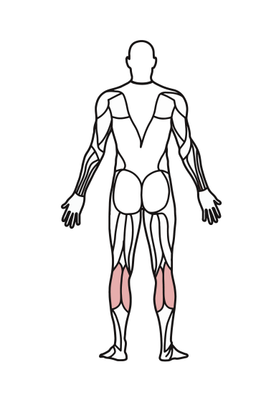Levers, mechanical advantage and disadvantage
I can draw and label the different components of a lever system and describe mechanical advantage and disadvantage.
Levers, mechanical advantage and disadvantage
I can draw and label the different components of a lever system and describe mechanical advantage and disadvantage.
These resources will be removed by end of Summer Term 2025.
Switch to our new teaching resources now - designed by teachers and leading subject experts, and tested in classrooms.
These resources were created for remote use during the pandemic and are not designed for classroom teaching.
Lesson details
Key learning points
- In our bodies, levers are made from bones, joints and muscles working together.
- A lever consists of a fulcrum (joint), the effort (muscle creating the movement) and the load (weight or resistance).
- There are three lever systems in the human body.
- A lever can operate with both mechanical advanatge or mechanical disadvantage,
Keywords
Lever - a lever arm (bone) that rotates or pivots around a fixed point (fulcrum) when a force (effort) is applied to move a resistance (load)
Fulcrum - the fixed point around which a lever pivots or rotates
Effort - the force applied to a lever to move a load
Load - the resistance that a lever is designed to move
Mechanical advantage - 2nd class levers allow a large load to be moved with a relatively small amount of muscular effort
Common misconception
When drawing levers, the body part needs to be included.
A lever will always be drawn using four shapes.
To help you plan your year 10 physical education lesson on: Levers, mechanical advantage and disadvantage, download all teaching resources for free and adapt to suit your pupils' needs...
To help you plan your year 10 physical education lesson on: Levers, mechanical advantage and disadvantage, download all teaching resources for free and adapt to suit your pupils' needs.
The starter quiz will activate and check your pupils' prior knowledge, with versions available both with and without answers in PDF format.
We use learning cycles to break down learning into key concepts or ideas linked to the learning outcome. Each learning cycle features explanations with checks for understanding and practice tasks with feedback. All of this is found in our slide decks, ready for you to download and edit. The practice tasks are also available as printable worksheets and some lessons have additional materials with extra material you might need for teaching the lesson.
The assessment exit quiz will test your pupils' understanding of the key learning points.
Our video is a tool for planning, showing how other teachers might teach the lesson, offering helpful tips, modelled explanations and inspiration for your own delivery in the classroom. Plus, you can set it as homework or revision for pupils and keep their learning on track by sharing an online pupil version of this lesson.
Explore more key stage 4 physical education lessons from the Movement analysis and basic biomechanics unit, dive into the full secondary physical education curriculum, or learn more about lesson planning.

Equipment
Post-it notes, mini whiteboards.
Licence
Starter quiz
6 Questions


scapula and humerus
humerus, radius and ulna
pelvis and femur
femur and tibia

Exit quiz
6 Questions

horizontal line
triangle
square
arrow





